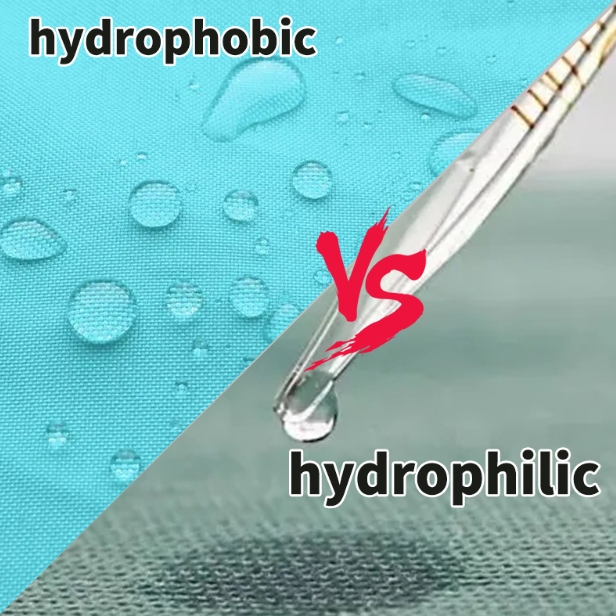Hydrophobic and hydrophilic are two terms used to describe the interaction of substances with water. They are crucial concepts in various fields, including chemistry, biology, and materials science.In this article, we will discuss the differences between hydrophobic and hydrophilic nonwoven materials.

As far as i known, the primary distinction between hydrophilic and hydrophobic nonwoven fabrics lies in their respective capacities for water absorption and repellency.
Hydrophilic non-woven fabrics exhibit excellent hydrophilicity and permeability, enabling rapid moisture absorption and maintaining a dry, comfortable state. These fabrics are typically derived from ordinary polypropylene spun-bonded nonwoven fabrics through a hydrophilic treatment process, resulting in enhanced hydrophilicity and permeability. Their primary applications lie in hygiene products such as diapers and sanitary napkins, where rapid fluid penetration and a dry feel are essential. Surfactants employed in hydrophilic non woven materials encompass both ionic and nonionic varieties, including polysorbates 20, 40, 60, and 80, which impart hydrophilicity to the fabric.
Conversely, hydrophobic non woven fabric possess a resistance to water wetting and are unsuitable for the surface of sanitary napkins but find application in the side panels (wings) of such products. This characteristic renders hydrophobic nonwoven fabrics indispensable in applications demanding water repellency. The hydrophobicity of these fabrics is attributed to the presence of oleophilic agents on the fiber surface, which can be categorized into monovalent (once hydrophilic), polyvalent (multiple times hydrophilic), and weakly hydrophilic, giving rise to various levels of hydrophilicity in the resulting nonwoven fabric.
In conclusion, the fundamental difference between hydrophilic and hydrophobic nonwoven fabrics pertains to their water absorption and repellency capabilities, as well as their suitability for specific applications. Owing to their superior water absorbency and permeability, hydrophilic nonwoven fabrics find extensive use in scenarios requiring rapid fluid absorption, such as in hygiene products. Conversely, hydrophobic nonwoven fabrics, with their water-resistant properties, are employed in specific areas like the side panels of sanitary napkins to provide a waterproof barrier.
